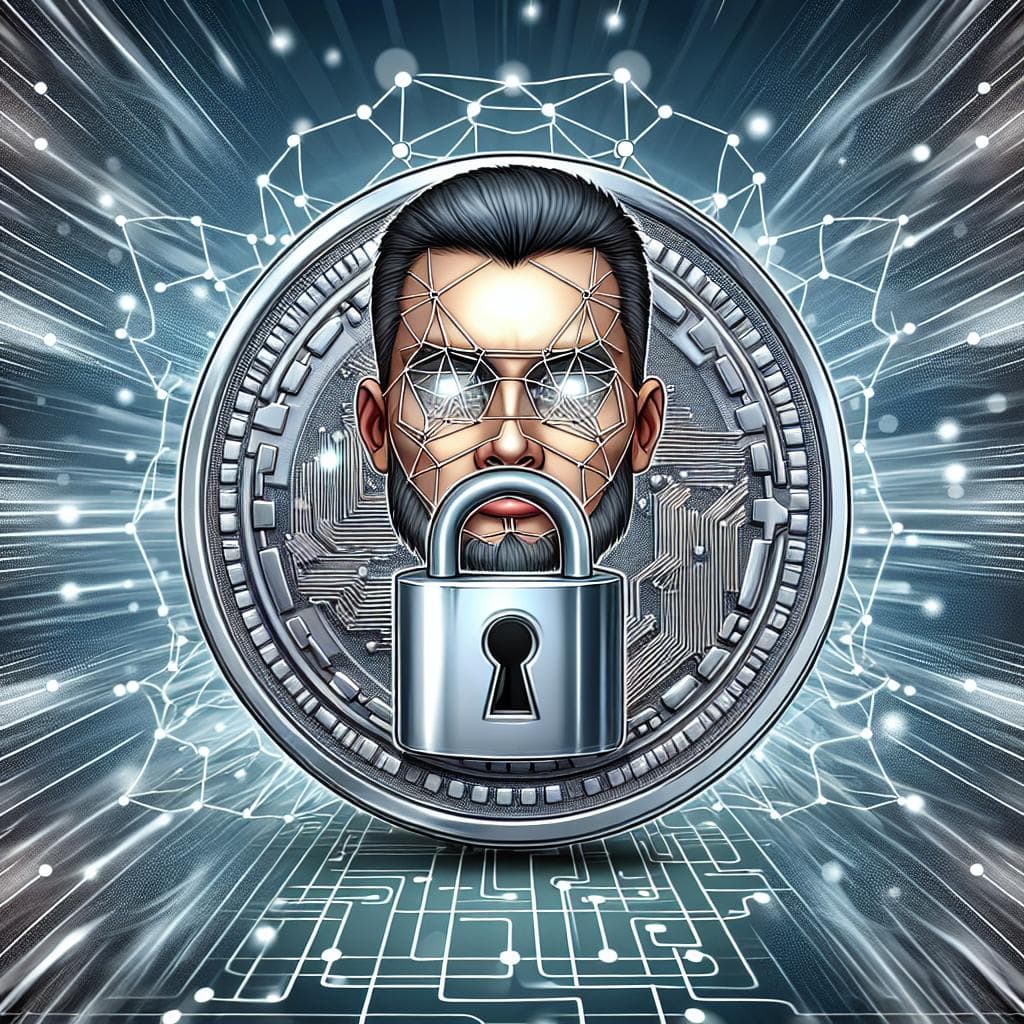If you're captivated by NFTs but not quite sure how to create one yourself, you're in the right place. This quick guide is here to walk you through each step of minting your very own NFT, from groundwork to grand unveiling.
Imagine owning an original painting but in a digital form. That's what NFTs are - unique digital assets verified using blockchain technology, providing proof of ownership and authenticity. Unlike cryptocurrencies such as Bitcoin, which are interchangeable or 'fungible', each NFT is distinct, with its digital signature.
Our digital realm is full of copies that are indistinguishable from the original. What makes NFTs revolutionary is the digital scarcity they offer. Thanks to the blockchain, NFTs can be owned, bought, and sold like physical assets, bringing value to digital creations that might otherwise be easily replicated.
Pre-Minting Checklist
Blockchains are the foundations that support NFTs. Ethereum is the most popular due to its extensive NFT ecosystem, but alternatives like Binance Smart Chain, Solana, and Polygon offer lower transaction fees. As a result, we're seeing these platforms start to rise in popularity against Ethereum-based NFTs.
To interact with NFT platforms, you need a digital wallet. MetaMask or Trust Wallet are user-friendly choices that are compatible with various blockchains.
Acquiring Cryptocurrency for Minting Fees
Minting an NFT isn't free. You’ll need cryptocurrency to cover 'gas' fees – the cost of executing transactions on the blockchain. Purchase crypto through exchanges like Coinbase or Binance, and transfer it to your digital wallet. If you're going to buy Ethereum-based NFTs, you'll need to purchase a little bit of ETH to perform transactions.
Choosing the Right NFT Marketplace
Where you mint your NFT matters. Options like OpenSea, Rarible, and Mintable each have their own audiences, fees, and processes. Research and choose a platform that aligns with the type of NFT you're creating. I've only ever used OpenSea to mint NFTs, and Ensvision to buy domain names, so I'm familiar with those, as for Rarible, and Mintable, they seem to be solid options as well.
Creating Your Digital Art or Content
Now, unleash your creativity! Craft your digital content, be it art, music, a game item, or any digital items. Remember, the value lies in originality and rarity, so ensure your work stands out.
Uploading Your Content to the Marketplace
Once your masterpiece is ready, upload it onto the chosen marketplace. Each platform has its own uploading process, but typically, you'll drag and drop your file and wait for it to upload fully.
Filling in the Details and Attributes of Your NFT
Provide a title, description, and any specific attributes to help potential buyers understand and appreciate your NFT. Think of this as your digital canvas's provenance – the story behind your art.
Setting the Price and Royalty Fees
Decide on the price of your NFT. This could be a fixed price or set for an auction. Additionally, determine the royalty percentage you'll receive on secondary sales. This ensures you'll benefit from your art's increasing value over time.
Finalizing and Minting Your NFT on the Blockchain
After you've filled in all the details, you'll finalize the minting process. Typically, this involves a gas fee. Click "Mint" and your digital asset will become a part of the blockchain, officially making it an NFT.
Post-Minting: What Happens Next?

Understanding Gas Fees and the Right Time to Mint
Minting can be costly, as gas fees fluctuate based on network congestion. Time your minting process when the network is less busy to save on costs, or consider 'lazy minting' options that defer the fee until your first sale.
Promoting Your NFT to Potential Buyers
Visibility is key in the crowded NFT marketplace. Utilize social media, join NFT communities, and leverage influencer partnerships to elevate your NFT's profile.
Handling Sales and Transferring Ownership
Once your NFT sells, the marketplace platform will handle the transfer of ownership, but it’s vital to understand how this process works and how you’ll receive your earnings – often in the form of cryptocurrency.
What Goes Into An NFT?
The Importance of Originality and Copyright in NFT Creation
Authenticity is the cornerstone of the NFT marketplace. When creating an NFT, it's crucial that the artwork or content is original and that you hold the copyright. This ensures you have the legal right to sell the digital asset and offers buyers confidence in the uniqueness and legitimacy of their purchase.
The Role of Metadata in Your NFT
Metadata acts as the identity card for your NFT. It stores crucial information such as the creator's details, the asset's description, and its properties. Accurate and rich metadata enhances your NFT's discoverability and helps in asserting its provenance.
The Costs of Minting an NFT
Breakdown of the Costs Associated With NFT Minting
Minting an NFT is not without expenses. Costs can include the initial gas fees for creating the NFT, listing fees on some marketplaces, and potential marketing costs. Understanding these fees is vital to strategically price your NFT.
How to Estimate Gas Fees and Budget for Your NFT Project
Gas fees can be volatile, dependent on network activity. Tools like Etherscan's Gas Tracker can help predict costs, but always allocate a buffer in your budget for fee fluctuations. Efficient budgeting ensures your NFT project remains profitable.
Legalities and Rights
Understanding Intellectual Property Laws Related to Digital Art
Navigating the legal landscape is essential for NFT creators. Familiarize yourself with copyright laws as they apply to digital creations. When buyers purchase your NFT, they're often buying a license to use the art, not the underlying copyright, unless explicitly included.
The Implications of Minting NFTs on User Ownership and Rights
The terms of ownership are crucial. Often, the NFT purchaser receives personal use rights while the creator retains commercial rights. Clearly outline the rights transferred with your NFT to avoid future disputes.
Risks and Considerations
Potential Risks Involved in the NFT Marketplace
Participating in the NFT marketplace comes with risks such as copyright infringement, fluctuating market values, and potential smart contract vulnerabilities. Perform due diligence and possibly consult legal advice to mitigate these risks.
How to Protect Your Work and Investment
Protecting your NFT means safeguarding the digital asset, the wallet containing it, and the rights attached to it. Employ best security practices for your digital wallet and understand the terms and conditions of marketplaces where you list your NFT.
The Creative Process of Making an NFT
Tips for Creating Compelling Digital Artwork
To stand out in the crowded NFT marketplace, your creation should not only be unique but captivating. Think about engaging storylines, eye-catching visuals, and interactive elements that could entice collectors. Remember, emotion often drives purchases, so infuse your work with something that resonates on a personal level with your audience.
Choosing Themes and Niches That Have Market Demand
Thorough research can help you identify trends and preferences within the NFT space. Check out popular themes and niches by exploring top-selling NFTs, and consider how your unique perspective can add value to these hot areas.
Collaborating with Other Artists and Creators
Collaboration can expand your reach and bring new dimensions to your work. Partner with artists whose skills complement yours, or with influencers who can help your NFT gain visibility. Co-creating can lead to innovative projects that capture the community's attention.
Strategies for Successfully Selling Your NFT
Understanding Your Target Audience and Where to Find Them
Get to know the people likely to be interested in your artwork. Are they gamers, art collectors, or crypto enthusiasts? Tailor your marketing message to resonate with these groups and engage with them on platforms they frequent, such as Discord servers, Twitter spaces, or Instagram.
Marketing Strategies for Promoting NFTs on Social Media and Other Platforms
Leverage the power of social media by creating compelling content that showcases your NFT and tells its story. Educational posts, behind-the-scenes looks, and interactive sessions can drive interest. Utilize hashtags, paid advertising, and community engagement to amplify your reach.
Establishing Credibility and Building a Collector's Community
Trust and community are quintessential in the NFT world. Share your creative process, participate in discussions, and be transparent about your NFT project's goals and details. This can build a loyal following that feels connected to your work and more inclined to support it.
Monitoring And Managing Your NFT Post-Sale
Keeping Track of Your NFT in the Secondary Market
Once your NFT is sold, it may be resold by collectors. Tracking its journey can provide insights into its value over time and help maintain relationships with buyers, who could become repeat collectors of your work.
Best Practices for Customer Service as an NFT Creator
Post-sale, maintaining customer service is crucial. Responding promptly to queries, addressing concerns, and providing clear and organized information will make collectors more likely to invest in your work again.
Planning Ahead: Thinking of Your Next NFT Project
After a successful sale, immediately start conceptualizing your next project. Reflect on what worked well and how you can apply those lessons to future NFT drops to keep the momentum going.
By walking through the intricate steps involved in creating and successfully selling your NFT, you’re now better equipped to launch into the digital collectible space. Join us as we delve deeper into "The Future of NFTs and Your Role as a Creator", to navigate the evolving landscape and stay ahead of the curve in this dynamic and exciting market.






